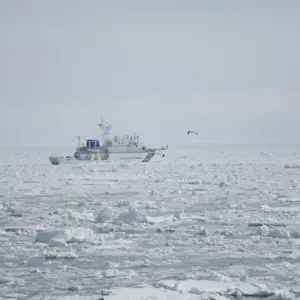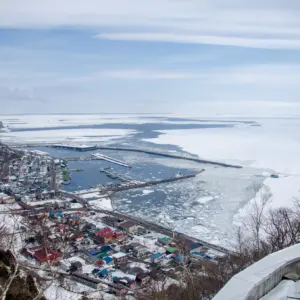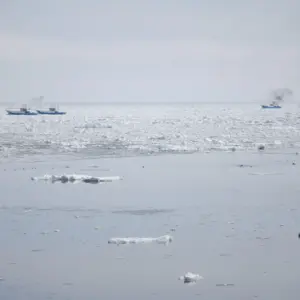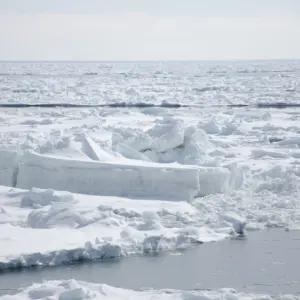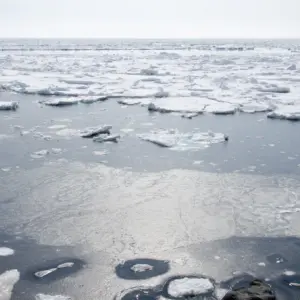While Okhotsk drift ice is famous in Monbetsu and Abashiri, it sometimes drifts further south, reaching Shari Town in Shiretoko, and even rounding the tip of the Shiretoko Peninsula to arrive at Rausu Town. On March 12, 2017, while driving from Kushiro, I witnessed a rare sight upon entering Rausu Town.
Black smoke billowed from various spots across a sea completely covered in drift ice. When I stopped the car, an incredibly loud engine noise echoed from beyond the sea. It sounded as if fishing boats were running their engines at full throttle.
Asking people gathered on the Rausu Port pier and a nearby observation deck what was happening, I learned that boats that had gone fishing that morning were now trapped and unable to move, caught in the drift ice. A fisherman explained, “When we left port this morning, there was no drift ice here, only some visible offshore. But within a few hours, the wind direction changed, and we were surrounded by ice in no time.”
It was surprising to realize that even local fishermen couldn’t predict the movement of the drift ice.
Such occurrences are rare, certainly not happening every year. To prepare for such situations, all fishing boats operating in Shiretoko are reportedly made of sturdy iron. Fishing boats in other parts of Hokkaido are apparently made of lightweight fiberglass, but if caught in drift ice, they would be immediately crushed by the ice’s pressure. This clearly demonstrates the immense power of nature.
However, even if a boat isn’t immediately crushed, it cannot escape on its own. Small fishing boats simply don’t have the power to break through and push aside the drift ice. The only vessel capable of plowing through this drift ice for rescue, I was told, was the Japan Coast Guard ship docked at Rausu Port.
After about an hour of watching the fishing boats struggle, the patrol boat finally set out for the rescue.
Access
2-3 Funamicho, Rausu-cho, Menashi-gun, Hokkaido 086-1832, Japan

